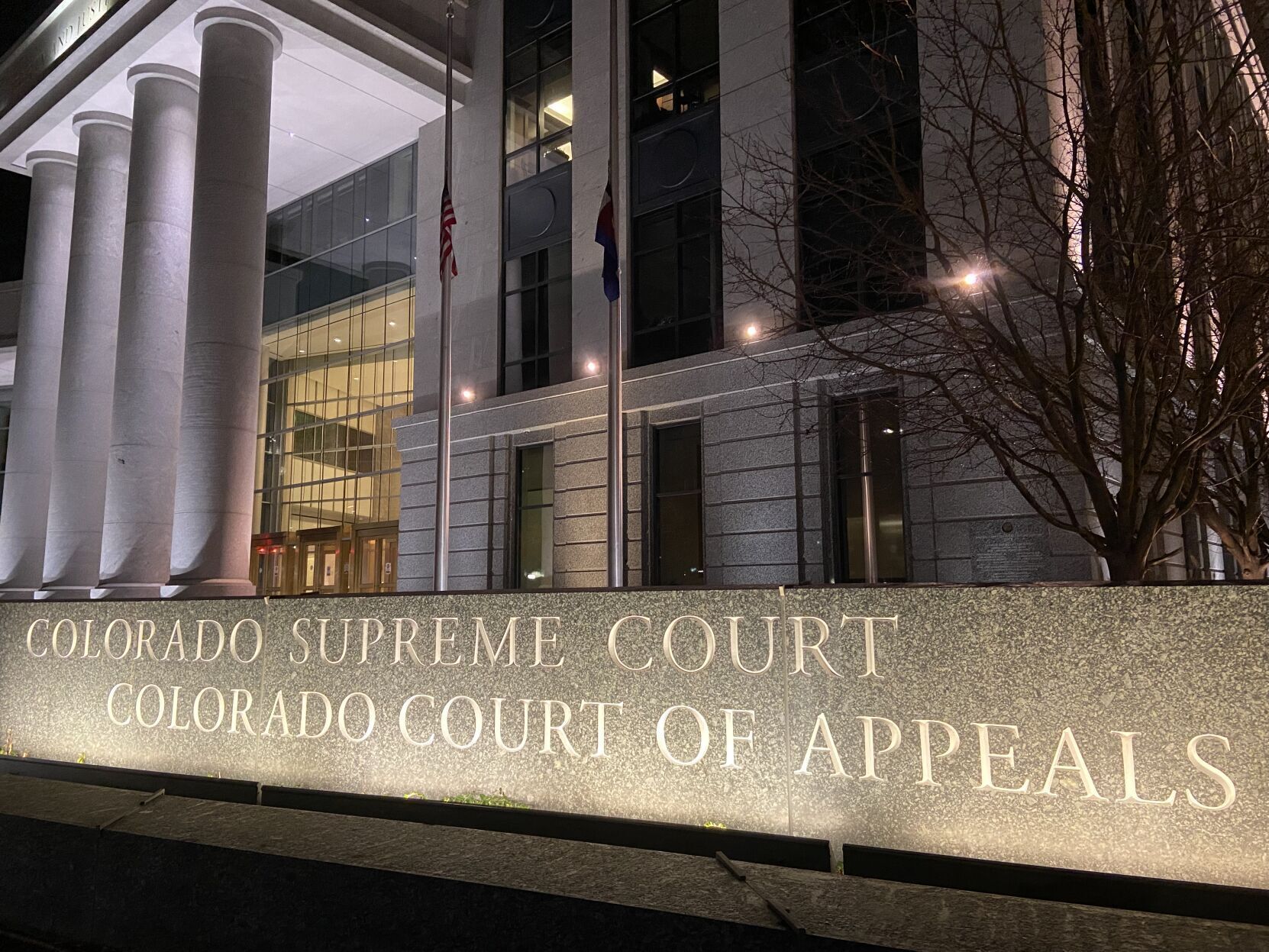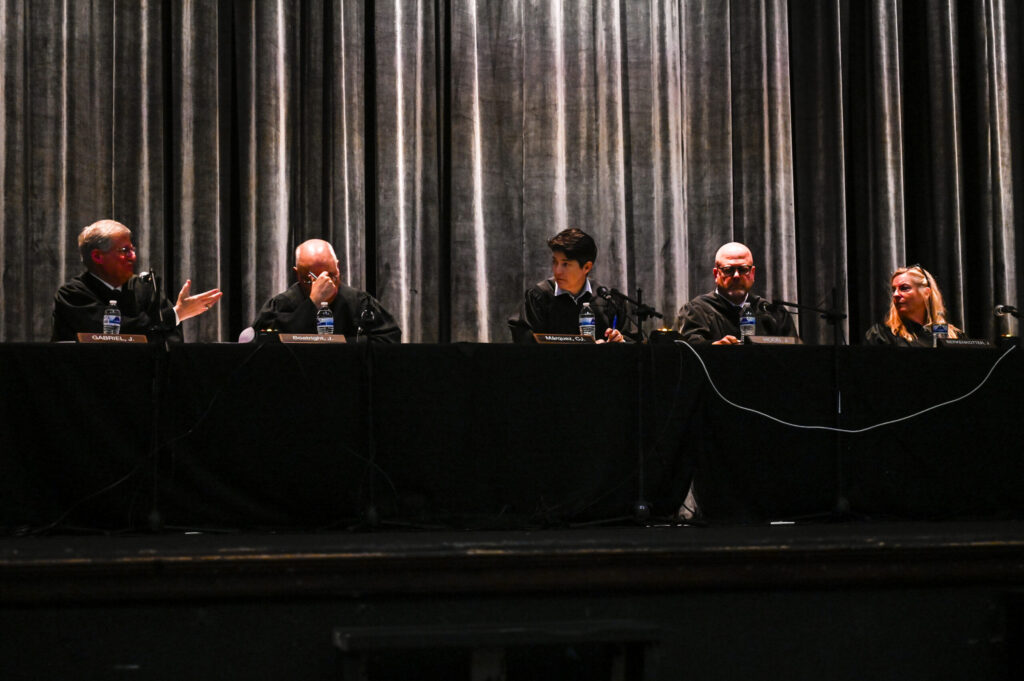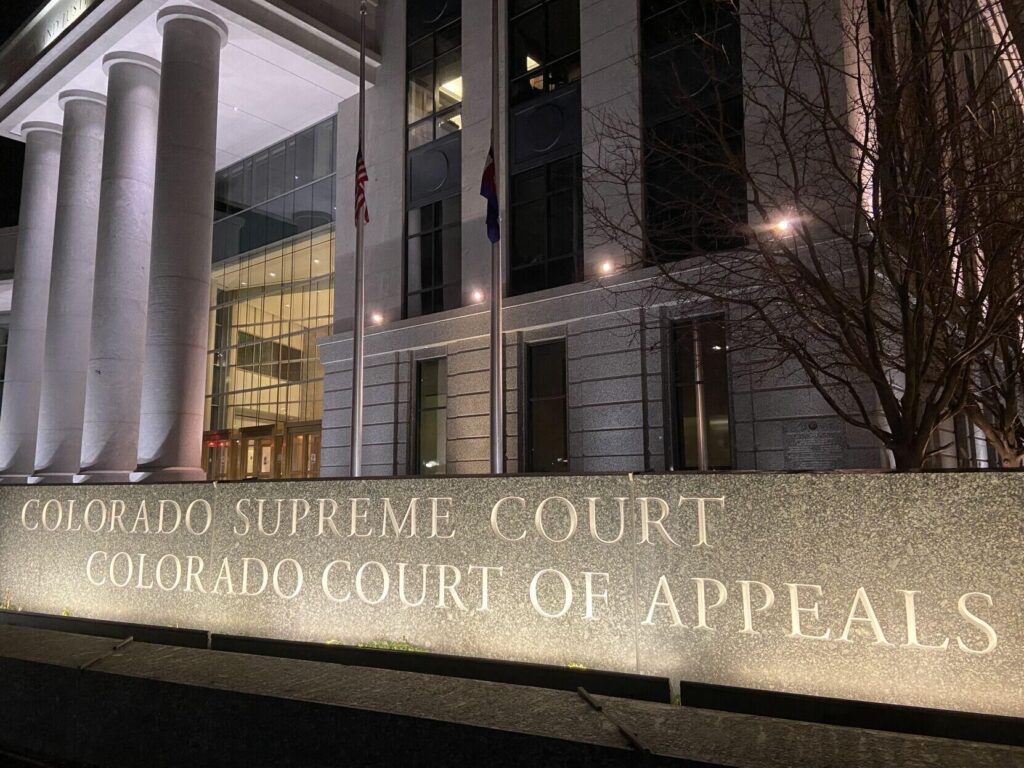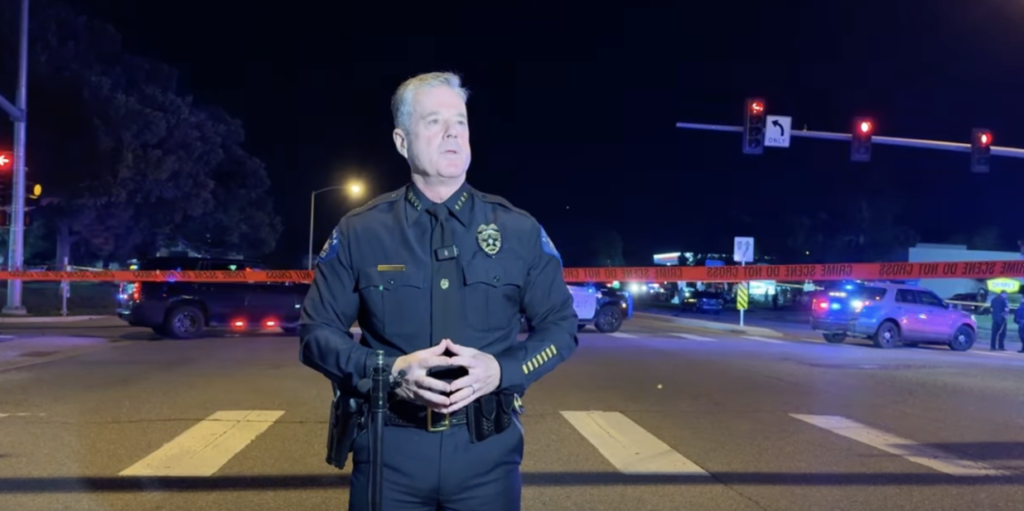Judges’ faulty instructions prompt appeals court to reverse convictions in 3 cases

Colorado’s second-highest court reversed convictions in three separate cases last month after the trial judges’ faulty instructions to jurors improperly lowered the burden of proof needed to secure a guilty verdict.
In each instance, the Court of Appeals determined the defendants’ juries were unable to consider key parts of their defense to the criminal charges, and the missing directions could have affected the outcomes.
The unusual knife wound
Michael Lanford was found dead on a sidewalk in northwest Denver on July 11, 2017. He was lying in a pool of blood with a metal pole nearby. Prosecutors subsequently charged Elizario Manuel Herrera with first-degree murder.
Herrera had been upset with how Lanford had treated his girlfriend, who was Herrera’s mother. After Herrera confronted Lanford about the alleged abuse, Lanford reportedly became aggressive and struck Herrera with the pole. Lanford died from a cut wound to his arm as Herrera allegedly fought back in self-defense.
The evidence showed Lanford’s wound was unusual. Denver’s top forensic pathologist did not deem it a stab wound because it was longer than it was deep. It did not target a major organ, but happened to be fatal because it cut through a major artery.
“In the several thousand autopsies I’ve done, I’m not sure I have a single wound to an upper extremity that transected a major artery without a lot of other sharp force wounds associated with it. So, yeah, this is not a common case,” James Caruso, Denver’s chief medical examiner, testified at trial.
The defense argued Herrera stabbed the victim once in his arm out of self-defense, and not with the intent to inflict a deadly injury.
“It’s unfortunate that there’s a one-in-a-million shot that he happened to sever the brachial artery and the man bleeds out,” argued Herrera’s attorney. But “that’s not murder.”
The jury received an instruction on the use of deadly force in self-defense. If jurors found Herrera used force that would normally be expected to produce death, and that he did so with the belief he was in imminent danger of being killed or seriously injured, they could acquit him.
Herrera also asked for an instruction on non-deadly force, which would allow for an acquittal simply if Herrera used a degree of force proportional to the force Lanford had used on him. But then-District Court Judge Kenneth M. Laff declined to read the non-deadly force instruction.
The jury found Herrera guilty of second-degree murder and he received a sentence of 96 years in prison.
On appeal, Herrera pointed out that the criminally accused are entitled to a self-defense instruction when there is some credible evidence supporting their theory of defense. In this case, the chief medical examiner’s testimony could suggest Herrera intended to use force to stop the attack, without meaning to inflict a deadly injury in an unusual location.
Writing for a three-member panel of the appellate court, Judge Stephanie Dunn explained the legal question could not hinge solely on whether a victim ends up dying from the defendant’s use of force.
“Rather, in determining whether a nondeadly force instruction should be given, what matters is the nature of the force used and, specifically, whether the force used would normally be expected to produce death,” she wrote on Oct. 20.
Caruso’s testimony established Lanford’s lone injury, while fatal, stood apart from other deadly stab wounds he encountered.
“From this evidence, we conclude that a reasonable person – untrained in anatomy – could find that a single, one-inch-deep cut in the upper arm would normally not be expected to produce death,” Dunn concluded.
Because Herrera was entitled to a jury instruction on non-deadly force, which could have resulted in an acquittal, the panel reversed Herrera’s conviction and ordered a new trial.
The Colorado Attorney General’s Office filed a petition last week, asking the panel to reconsider its ruling. Senior Assistant Attorney General Gabriel P. Olivares believed the Court of Appeals had misinterpreted the prosecution’s argument to suggest that because Herrera’s jury convicted him for using deadly force, it would have necessarily rejected self-defense through non-deadly force.
Although Olivares claimed that was not his argument on appeal, he did, in fact, advance such a theory during oral arguments in October.
“The jury’s verdict rejected non-deadly physical force,” Olivares told the panel at the time.
The case is People v. Herrera.
Choking a child
Victor J. McCullough Jr. reportedly used a “progressive form of discipline” to handle the large, blended family living in his house. McCullough, who served in the military and worked in law enforcement, acknowledged spanking the children, but denied putting his hands on their throats.
Nevertheless, El Paso County prosecutors charged McCullough with attempted second-degree murder, assault and child abuse after learning about the alleged extent of McCullough’s discipline.
McCullough’s daughter, identified as S.M., testified McCullough had wrapped a jiu-jitsu belt around her neck from behind and strangled her until she started kicking her legs. Other children described McCullough placing his hands on their throats and lifting them up until they were off the ground, rendering them unable to breathe.
Although McCullough denied ever choking his children, he asked for his jury to be instructed on the affirmative defense of “abandonment” for the attempted murder charge. An affirmative defense allows for an acquittal on the grounds that a defendant’s conduct was justified, and a defense of abandonment would mean McCullough voluntarily ceased his attempt to commit a crime.
Then-District Court Judge Theresa M. Cisneros refused to provide the abandonment instruction based on McCullough’s denial that he choked or strangled anyone. Jurors convicted McCullough after a 2018 trial and he received a sentence of 20 years in prison for the various offenses.
In order to receive an affirmative defense instruction, there must be some credible evidence to support the defense. McCullough contended there was evidence he abandoned any strangulation, pointing to testimony that children would “tap out” when they needed him to stop choking them. For example, S.M. had acknowledged McCullough stopped strangling her when she kicked her legs and “when he saw my eyes close.”
McCullough’s lawyer further argued to the Court of Appeals that the law establishing the abandonment defense does not require a defendant to admit to the charged conduct.
The government flatly disagreed that McCullough was entitled to have jurors consider an affirmative defense to justify his conduct, when his argument was he never choked anyone in the first place.
“McCullough’s sworn denial of ever choking any child is entirely inconsistent with the notion that he choked them but then voluntarily abandoned the attempt,” wrote Senior Assistant Attorney General L. Andrew Cooper.
A three-judge appellate panel sided with McCullough, finding that even if the abandonment defense was logically inconsistent with McCullough’s denials, that was irrelevant.
“In our view, the evidence of McCullough’s decision to release S.M. from the choke hold, and the absence of evidence showing that any outside force caused him to release the hold, constitutes ‘some credible evidence’ to support giving an abandonment affirmative defense instruction,” wrote Judge Michael H. Berger on Oct. 20.
The panel ordered a new trial for the attempted murder charge only, and also directed that McCullough be resentenced on his assault convictions.
The case is People v. McCullough.
The head drop and the kick
On the night of March 18, 2019, a Fremont County sheriff’s deputy, identified as Deputy Jimenez, arrested Dustin Wayne Dixon on a warrant and brought him to the jail. Holding cells were full, so a sergeant at the jail asked Dixon to change into uniform so he could wait in the general population.
Dixon refused, and six jail personnel then surrounded Dixon to drag him to a location where he could change clothes. A struggle ensued and the officers attempted to lift Dixon off of the ground to move him. In the process, one deputy, identified as Deputy Selves, let go of Dixon’s arm, causing Dixon’s head to land on the concrete floor. Dixon then kicked his foot out, hitting Jimenez in the abdomen.
Prosecutors charged Dixon with second-degree assault on a peace officer. A jury convicted him in January 2020, but not without apparent difficulty. Jurors deliberated for six hours – longer than it took to present evidence in the case – and sent multiple questions to the judge, including, “What do we do if we can’t agree?”
Dixon’s attorney argued self-defense at trial, explaining to the jury he kicked at Jimenez because “this group of officers (was) grabbing him, picking him up and dropping him.”
On appeal, Dixon took issue with the prosecutor’s characterization during closing arguments of how self-defense worked.
Dixon, the prosecutor told jurors, needed to have “a reasonable belief that Deputy Jimenez was either engaged in the unlawful use of physical force against him at that time, or was imminently going to be engaged in the unlawful use of physical force against him, at the time that he knowingly struck Deputy Jimenez.”
Immediately afterward, Dixon’s attorney protested to District Court Senior Judge Scott B. Epstein that the prosecutor had misstated the law. The prosecutor gave the impression that Dixon’s use of force in self-defense had to be directed toward some action by Jimenez, the defense explained. When there are multiple assailants, or when a defendant’s response injures a bystander, he is still acting in self-defense.
Epstein declined to give any additional instructions to the jury. Dixon subsequently turned to the Court of Appeals, where he labeled the prosecutor’s uncorrected statements to the jury as “misconduct.”
“The prosecution essentially instructed the jury that Mr. Dixon had no self-defense claim as to Jimenez because Jimenez was not the one who used or threatened to use force,” wrote public defender Jeanne Segil. “Thus, the misconduct went to the heart of this theory of defense.”
A three-judge panel of the Court of Appeals agreed that the prosecutor’s misstatement of the law, coupled with Epstein’s failure to give a clarifying instruction, affected Dixon’s right to due process under the law.
“While nothing in the instructions prohibited the jury from considering the impact of multiple assailants, the prosecutor’s improper legal argument did exactly that,” wrote Judge Timothy J. Schutz on Oct. 20.
He added it was “clear that the jury struggled with whether Dixon was innocent or guilty of this offense,” and a correct instruction could have affected the verdict.
Although the panel reversed Dixon’s conviction based on the instructional error alone, it briefly addressed another argument on appeal – that Epstein mischaracterized the law on self-defense during jury selection. Epstein, in attempting to explain self-defense, told the jury that some people may believe it is wrong to “hit a woman.”
“I agree. But, but – there’s always going to be a ‘but,'” he continued. “‘Can’t hit a police officer.’ I agree. But, when I saw what happened to Rodney King, it made my heart sink.”
There are cases, Epstein said, when the facts “fit this exception over here.”
Dixon believed the judge’s comments effectively told jurors a person cannot “hit a woman” or a police officer, unless there is an “exception” of a Rodney King-type beating. The Court of Appeals declined to address whether Epstein’s comments affected Dixon’s legal rights.
“Nonetheless, we take this opportunity to remind the trial court that the supreme court has cautioned against using colloquial phrases and anecdotes that may trivialize important constitutional rights,” Schutz warned.
The case is People v. Dixon.













